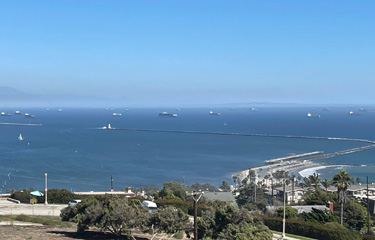High material, transportation costs continue to impact US seafood industry

The latest in a long line of transportation snags affecting the seafood industry is gridlock at ports in the U.S. state of California, which has created supply chain woes for importers of products from China and other major seafood-supplying nations.
A record-breaking 73 ships were waiting at the ports of Los Angeles and Long Beach on 20 September, according to the Marine Exchange of Southern California, per The Wall Street Journal, with the average wait time for ships to get into Los Angeles extending out to 8.5 days, also a record.
The backup is a result of COVID-19-related disruptions, holiday-buying surges, and a national labor shortage, according to Business Insider.
Judah Levine, the head of research at online freight marketplace Freightos, said the average time it takes for ocean freight to complete a one-way trip has increased 43 percent in the last year, from 50 days to 71.5 days. Consequently, shipping costs have soared, with the price for transporting a 40-foot container between the United States and Asia popping up 500 percent year-over-year to USD 20,586 (EUR 17,525).
"When we see these massive increases in transportation costs, it's clear somebody will have to pay for it," Douglas Kent, the executive vice president of strategy and alliances at the Association for Supply Chain Management, told Business Insider. "One more disruption could send [the global supply chain] into complete chaos.”
In response to soaring transportation, raw material, and packaging costs shortages and cost increases – exacerbated by labor shortages – many seafood suppliers have been forced to raise the prices they are charging foodservice companies and retailers.
“Corrugated, raw material ingredients, packaging – you name it, everything is up and sometimes takes longer to get,” Trans-Ocean Products Vice President of Sales and Marketing Lou Shaheen told SeafoodSource.
Bellingham, Washington-based Trans-Ocean is the largest retail seller of surimi made from Alaska pollock. Similar to many other seafood suppliers, Trans-Ocean has implemented minor price increases to retailers.
“We very seldom see price increases on surimi seafood, but our customers are now used to [food price increases]: they are experiencing it in every category,” Shaheen said. “We are doing our best to ride it out and hopefully surimi seafood prices can come back down.”
Pollock is just one of many species experiencing rising prices. Many types of crab have become so scarce in recent months that many restaurants and retailers have backed off from using crab in their dishes. In Biloxi, Mississippi, home to several major casino operators, many casinos have stopped carrying Alaskan king crab legs on their buffets. Crab claw meat price has also soared, and one of the nation’s largest importers – Phillips Foods in Baltimore, Maryland – has taken multiple prices on crab meat and other seafood from Asia this year, Vice President of Retail/Club Sales John Baxter told SeafoodSource.
While claw meat was around USD 7.00 (EUR 6.00) per pound wholesale last year, it has skyrocketed to USD 19.00 (EUR 16.00) a pound wholesale this year, Baxter noted.
The soaring prices are driven by container, freight, and logistics’ costs, which have risen tenfold this year, according to Baxter. But despite the rising costs, retailers and restaurants continue to demand claw meat, he said.
“We have been producing and bringing in more crab meat than we did last year – against the rest of the industry – but it’s still not enough to meet the demand,” Baxter said.
And Baxter doesn’t see the situation improving anytime in the near-future.
“You have the holidays coming up and Lent. I’m not seeing much relief on the horizon – until maybe past Lent. However, if you have a bad crab season overseas with a tsunami or something else, 2022 could be worse,” he said. “Even if consumers puts on the brakes, it is going to take at least a quarter to have the crabmeat industry get inventory levels up to a comfortable position.”
In turn, supermarket chains are raising prices to consumers. Executives at Cincinnati, Ohio-based Kroger, which operates more than 2,800 stores in the U.S., said that inflation in the U.S. economy has forced it to raise its retail prices 2 to 3 percent in the second half of 2021. Boise, Idaho-headquartered Albertsons Companies, which operates more than 2,200 locations across the U.S., is also raising prices due to inflation, it announced recently.
Meanwhile, FedEx said its rates will jump a significant 5.9 percent in 2022, according to the Wall Street Journal, and UPS raised its rates between 4 and 5.5 percent this year, AFP reported.
Photo courtesy of Marine Exchange of Southern California






Share